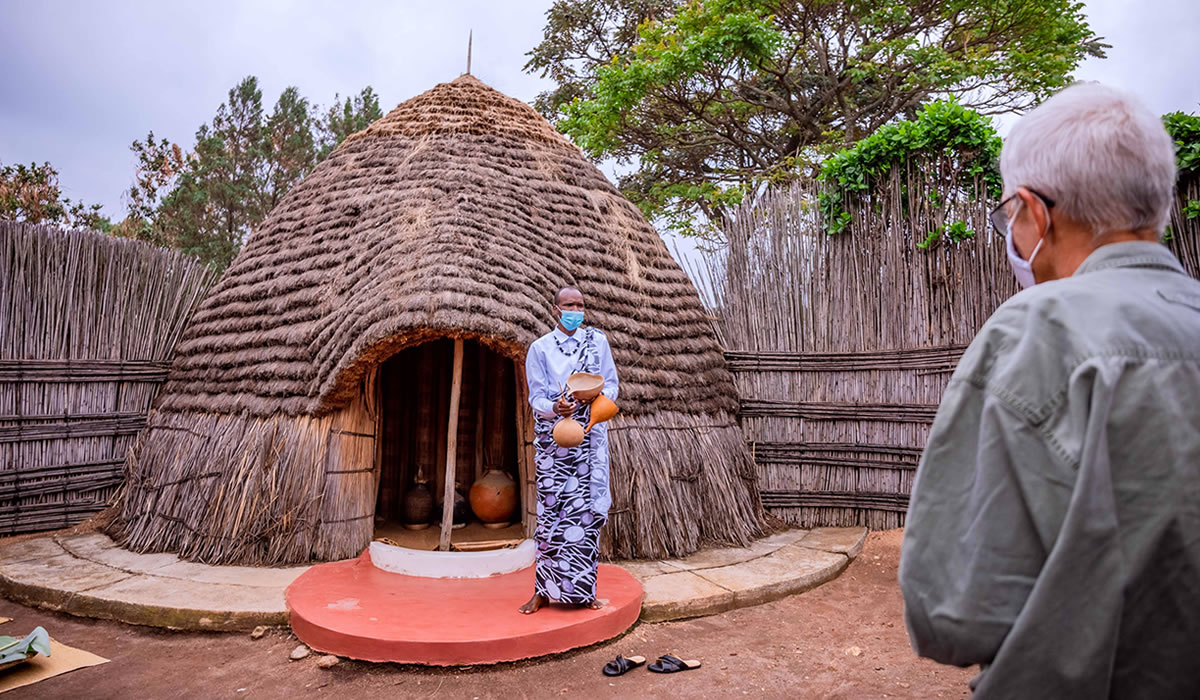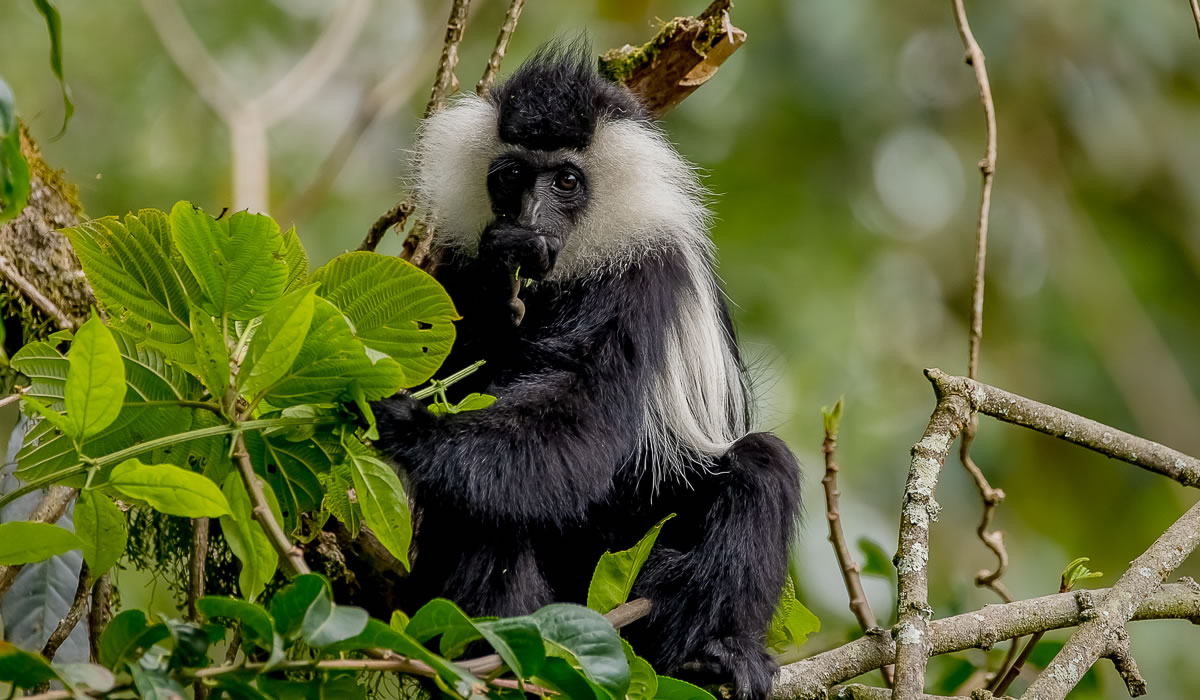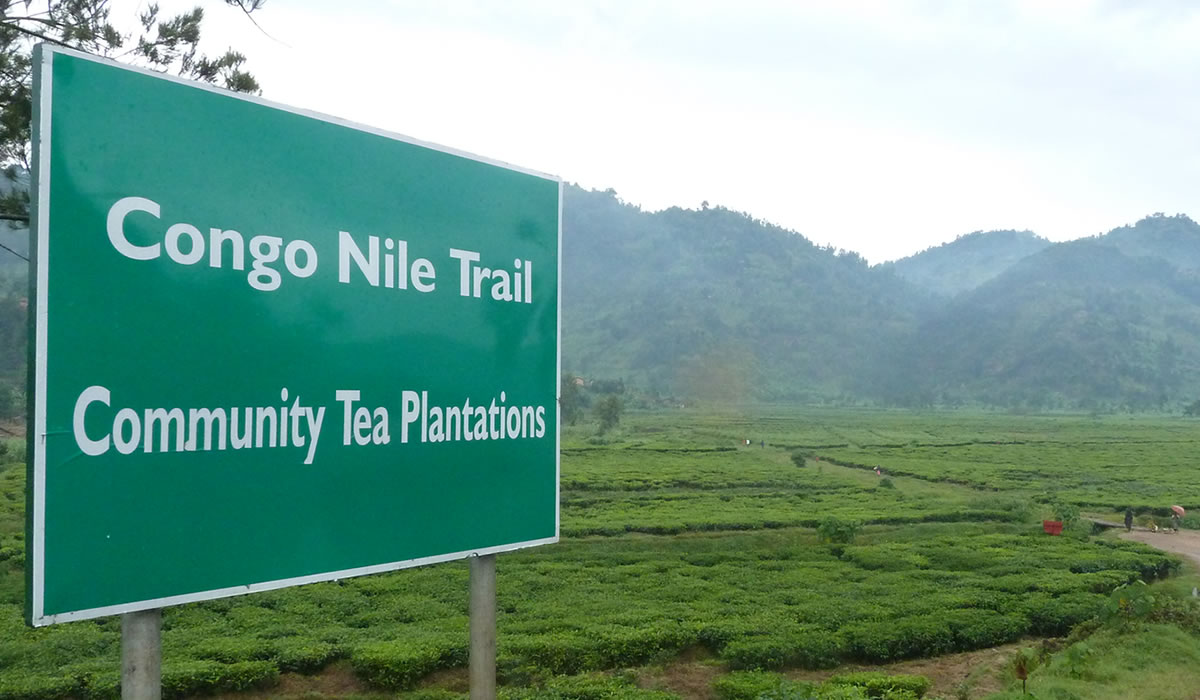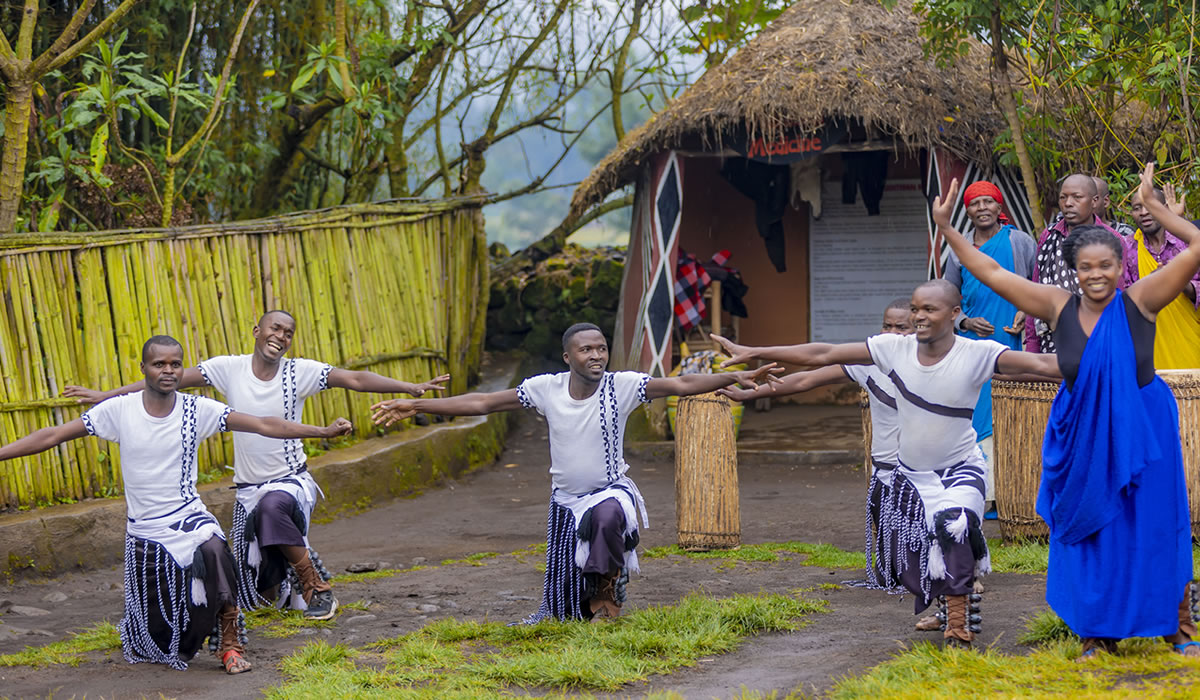Located in the southwestern part of Rwanda, Nyungwe Forest National Park stands as one of…

Nyanza Cultural Experience in Rwanda.
Located in the southern province of Rwanda, the town of Nyanza is more than just a geographic location, it is a vibrant repository of Rwanda’s cultural, historical, and royal heritage. Known as the cradle of Rwandan monarchy, Nyanza was once the political and royal capital of the Kingdom of Rwanda, serving as the seat of power for the last Rwandan kings before the monarchy was abolished in the early 1960s. Today, Nyanza has become a key destination for cultural tourism in Rwanda, offering visitors a deeply immersive experience into the traditions, customs, and history of the Rwandan people. The Nyanza Cultural Experience is not just a sightseeing tour, it is a meaningful journey into Rwanda’s identity, through its royal palaces, traditional arts, community engagement, and living history.
Historical Background.
The Kingdom of Rwanda, one of the most centralized and sophisticated pre-colonial monarchies in East Africa, was governed by a Mwami (king), who was both a political and spiritual leader. Nyanza became the royal capital in the late 19th century during the reign of King Yuhi V Musinga, and it remained the center of power until the deposition of King Kigeli V Ndahindurwa in 1961.
During this time, Nyanza was not just a political capital but a cultural and intellectual hub. It attracted artisans, poets, warriors, and advisors who shaped the kingdom’s policies, culture, and oral traditions. The royal court in Nyanza was a sophisticated institution, complete with ceremonial functions, administrative structures, and a strong influence on national identity. The legacy of the monarchy, though no longer in place, continues to influence Rwandan culture and values.
The King’s Palace Museum.
The centerpiece of the Nyanza Cultural Experience is undoubtedly the King’s Palace Museum, located in Rukari, Nyanza district. This heritage site, managed by the Institute of National Museums of Rwanda, offers a detailed reconstruction of the traditional royal court and the later colonial-era palace.
At the heart of the museum lies a traditional thatched royal palace, a stunning architectural marvel meticulously reconstructed using historical records and oral history. The palace, made entirely of organic materials such as wood, bamboo, and straw, represents the pre-colonial royal residence of the Mwami. Inside, visitors encounter a thoughtfully designed interior featuring the king’s throne, bedrooms, seating areas for guests, and ceremonial spaces each with a symbolic layout that reflects traditional Rwandan beliefs and social order.
Outside the palace, long-horned Inyambo cows graze gracefully in the royal courtyard. These cows, a symbol of prestige and power, are descendants of the sacred cattle once owned by the monarchy. Visitors can watch a unique demonstration of Inyambo cow rituals, including traditional songs sung to the cows, a practice that illustrates the deep connection between Rwandans and their cattle.
Next to the traditional palace is the colonial-style brick palace built for King Mutara III Rudahigwa in the 1930s. This modern residence showcases the intersection between Rwandan tradition and European influence during the colonial era. The palace is preserved with some of its original furnishings and documents, including photographs of the royal family, gifts from foreign dignitaries, and artifacts illustrating the transition from monarchy to republic.
Cultural Performances and Storytelling
The Nyanza Cultural Experience is more than a tour of static exhibits, it is a dynamic interaction with Rwandan culture. Visitors are treated to live traditional dance performances by local troupes dressed in umushanana, the traditional attire of Rwandan women, and warrior costumes for men. The dances are energetic, symbolic, and storytelling in nature ranging from celebratory dances to those that reenact royal court scenes or historical battles.
Intore dance, often performed at the palace, is particularly captivating. Known as the “dance of heroes,” Intore involves synchronized movements, high jumps, and drumming, symbolizing bravery and honor. Performers are often descendants of traditional Intore dancers, keeping the ancestral legacy alive.
Equally important is oral storytelling, a rich Rwandan tradition that predates written history. Elders and trained guides recount myths, legends, and historical tales that have been passed down through generations. Stories of great kings like Mwami Ruganzu Ndoli, famed for his heroic conquests and mystical powers, or of the prophetic Queen Kanjogera, provide context for Rwanda’s cultural evolution and values.
Art, Craft, and Community Engagement
Beyond the royal grounds, Nyanza offers a variety of artisan workshops and cultural experiences that highlight Rwanda’s creative spirit. Visitors can participate in traditional craft-making, including basket weaving, pottery, and wood carving. Local cooperatives, often run by women, invite guests to learn the intricacies of Rwandan designs, such as the Agaseke basket, an iconic symbol of peace and prosperity.
The town is also home to community-based initiatives that promote cultural preservation and sustainable tourism. The Ubucuruzi bw’Imigongo cooperative, for instance, showcases the famous Imigongo art, geometric black, white, and red patterns painted using cow dung and natural dyes. Originating from Eastern Rwanda but popularized nationally, Imigongo art has found a second home in Nyanza, where artists teach visitors the process from preparation to painting.
Many tour packages include a home visit to local families, where guests can share a traditional Rwandan meal, try their hand at cooking local dishes like Isombe (cassava leaves), Ibihaza (pumpkin), or Ubugali (cassava paste), and engage in conversations with community members. This exchange deepens the understanding of Rwandan values such as umushyikirano (dialogue), ubumwe (unity), and ubupfura (dignity).
Educational Opportunities and Youth Engagement
The Nyanza Cultural Experience is also an educational journey, with programs tailored for students, researchers, and cultural enthusiasts. School groups regularly visit the King’s Palace Museum as part of Rwanda’s national curriculum on history and culture. The museum conducts interactive learning sessions, exhibitions, and guided tours in Kinyarwanda, English, and French, ensuring inclusivity and accessibility.
Youth involvement is a cornerstone of the cultural preservation effort. Local cultural troupes and museums collaborate with schools and community centers to train young performers, artists, and guides. These initiatives instill a sense of pride and continuity among the younger generation, ensuring that Rwandan heritage remains vibrant and relevant.
Nyanza Genocide Memorial and Contemporary Reflections
While Nyanza is renowned for its royal past, it is also a site of deep historical reflection. The Nyanza Genocide Memorial, located within walking distance of the palace, commemorates the victims of the 1994 Genocide against the Tutsi. Over 12,000 victims are buried at the site, and the memorial serves as a place of mourning, remembrance, and education.
Visiting the memorial provides a balanced perspective on Rwanda’s history acknowledging both its cultural richness and the tragedies that have shaped its recent past. The proximity of the Genocide Memorial and the King’s Palace is a poignant reminder of Rwanda’s journey from monarchy, through conflict, to reconciliation and renewal.
Accommodation and Accessibility
Nyanza is easily accessible by road, located approximately 90 kilometers south of Kigali, Rwanda’s capital, along a well-paved highway. The journey takes about two hours by car or bus, making it ideal for a day trip or an overnight stay.
The town has a range of accommodation options, from modest guesthouses to mid-range lodges, often operated in partnership with local communities. Popular options include the Heritage Hotel, which offers cultural décor and local cuisine, and various eco-lodges that provide quiet retreats with views of the surrounding hills.
Restaurants and eateries in Nyanza offer authentic Rwandan cuisine, with menus featuring brochettes (grilled meat skewers), matoke (steamed green bananas), and fresh juices made from passion fruit, mango, or tree tomato.
Integrating Nyanza into a Broader Cultural Itinerary
For travelers interested in cultural tourism, Nyanza can be combined with other nearby attractions. A short drive east leads to Huye (Butare), home to the Ethnographic Museum of Rwanda, another major repository of Rwandan culture and pre-colonial history. West of Nyanza lies Nyamagabe, a gateway to Nyungwe National Park, where visitors can explore rainforests, track chimpanzees, and walk the canopy trail.
These combinations offer a well-rounded experience that blends history, culture, and nature, providing deeper insight into Rwanda’s identity and transformation.
The Nyanza Cultural Experience is a powerful portal into Rwanda’s soul. It honors a royal legacy that shaped the nation’s past, celebrates a vibrant culture that defines its present, and nurtures values that inspire its future. Through immersive encounters be it in the halls of a thatched palace, the rhythms of an Intore dance, the stories of elders, or the artistry of local cooperatives visitors leave Nyanza not just with memories, but with a profound appreciation for the resilience, creativity, and dignity of the Rwandan people.
In a country known for its remarkable recovery and forward momentum, Nyanza stands as both a reflection and a reminder that understanding where we come from is essential to knowing who we are. For anyone seeking to connect with Rwanda beyond its scenic landscapes, the cultural heartbeat of Nyanza offers a timeless and transformative experience.




